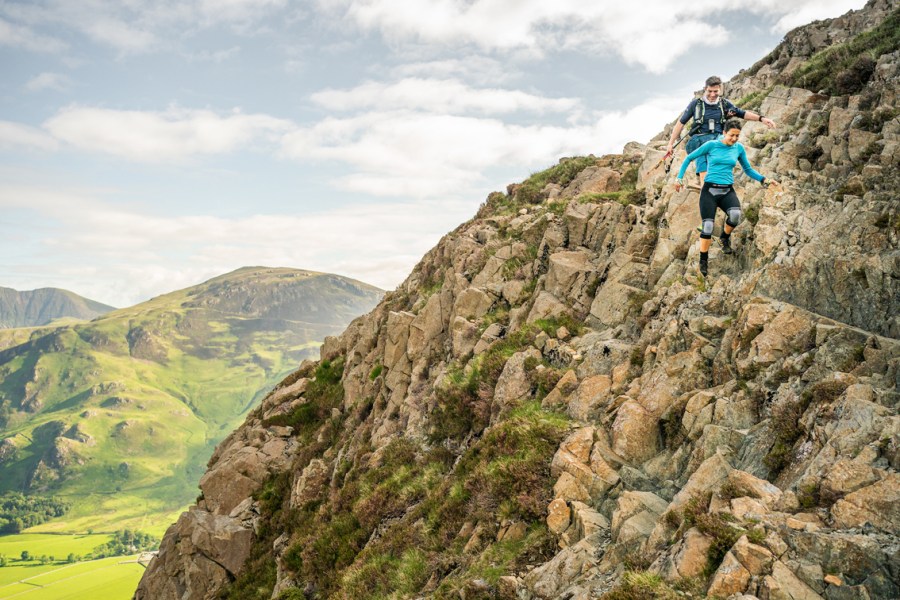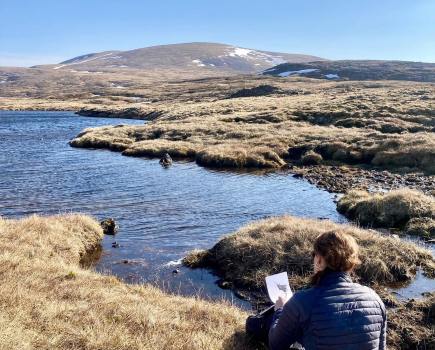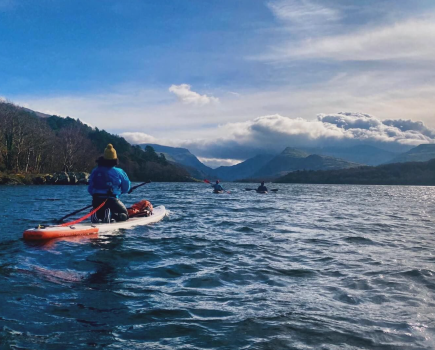Earlier this summer, Sabrina Verjee ran the Wainwrights in record time. We asked her to talk us through the ups and downs of her epic 144 hours in the mountains.
When you’re setting out to break an athletic record, the line between success and failure can be slim. Nobody knows this better than Sabrina Verjee, who finally became the fastest person to complete all 214 Wainwrights in June after three failed attempts (it took her five days, 23 hours and 49 minutes – just less than 144 hours). Sabrina’s previous attempts were scuppered by bad weather, injury and asthma.
This time, supported by a full cast of friends, pacers and well-wishers, the Lake District-based vet finally achieved her long-held goal. Here, she takes us through her highs and lows over the course of the effort, and offers an insight into the tenacity, resilience and persistence required to complete a record-breaking fell run.
(Main image: Sabrina descending Haystacks on day four of her round. Photo: Steve Ashworth)
A strong start (and some sour grapes)
I started in Great Langdale. It was windy and wet when I set off – and, I’ve got to be honest, when I woke up that morning I felt stiff. I hadn’t slept well. If it had been a normal day then I wouldn’t have even contemplated going for a run. I didn’t want to tell anybody that; I thought I would just start and see how it went.
At the beginning it felt really slow so I was surprised to arrive in Rydal [at the end of the first leg] only six minutes slower on that leg than I was on my previous attempt. That’s when I knew it was going to be a success – as I was putting in less effort but maintaining a similar pace.”
I set out on leg two feeling good but worried that I only had one pacer with me on that leg. My friend Tom Gibbs had had to drop out due to injury, and I was concerned about [remaining pacer] Al because it was hot and he had to carry everything. So I decided to maintain a steadier pace so as not to burn Al out.
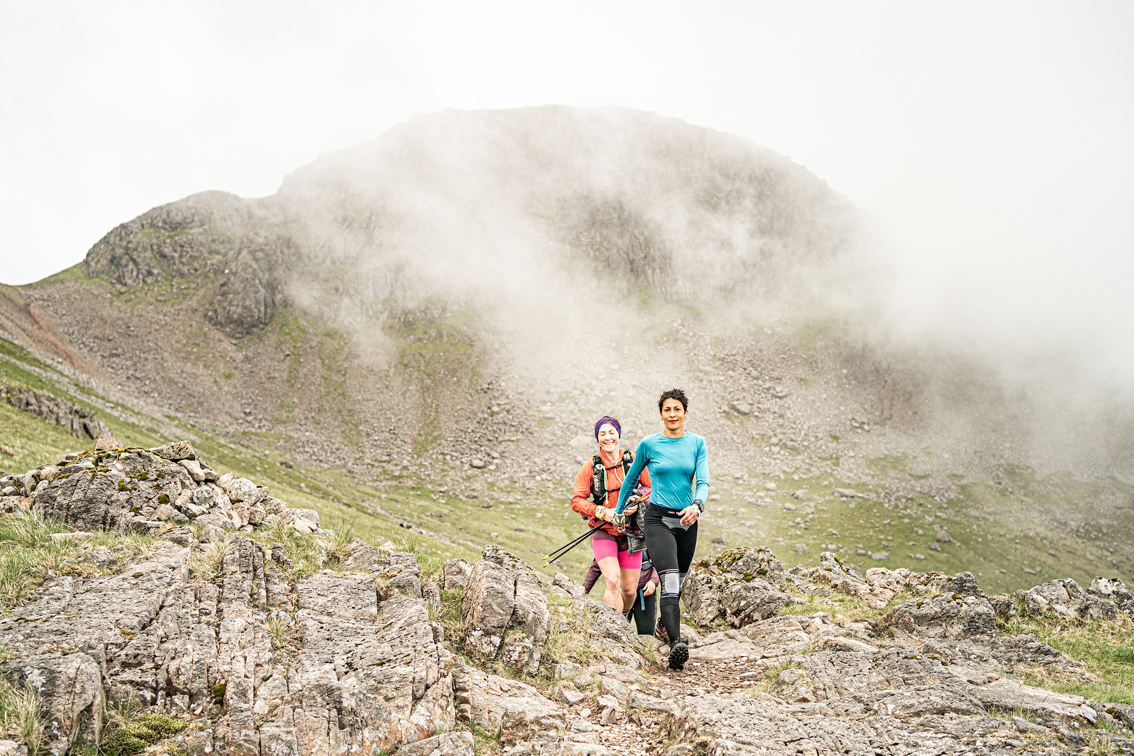
Day four on Brandreth. Photo: Steve Ashworth
When I got into Kirkstone at the end of leg 2, Ben [Turner, Sabrina’s husband] was trying to force me to eat. He was really bullying me and I was struggling to put the food in my mouth but was really trying … and then I vomited! It looked like there were olives in the vomit, but it turned out they were the skins of grapes I’d eaten two days before and I think that’s what was making me feel a bit rough.
I very rarely vomit, and I could see in Ben’s eyes that he was thinking it was all over. But I said: “I’m fine, I feel much better now, I’m ready to go.”
Moving too fast
Later on, Ben was getting cross with me because I was going too fast and he was having to reschedule people. We arrived at Mosedale before the pacers did. There was another moment like that at Rannerdale – I was four hours early, so I had a sleep waiting for them and when I woke up they still weren’t there! The timings were thrown out because I was using times from my third attempt when the cold air really triggered my asthma, so that had slowed me down.
The only point where I was a bit concerned was at Ennerdale. I had this thing where I was trying to pee and couldn’t, and I knew I needed to drink more. Everyone was trying to hurry me out of Ennerdale and I told them: “no, I need to sit here and drink more before I head out”.
It was very hot that day so I knew I needed to correct this hydration issue before proceeding or I would rapidly deteriorate. I was only there for half an hour, but it was a well-spent half an hour of drinking and eating.
Sleep on the go
There was a stretch between Ennerdale and Wasdale when I began to feel really sleepy and dysfunctional, so I said to [pacer] Tim: ‘I’m going to have a two-minute nap’. When I woke up from that I felt like a new person!
Generally, my sleep periods were around an hour and a half. I would choose the time I was going to sleep and then try to coincide it with a support point and it all worked quite well. Over the years, and having never slept well as a kid, I’ve got used to working on very little sleep. It’s very normal for me.
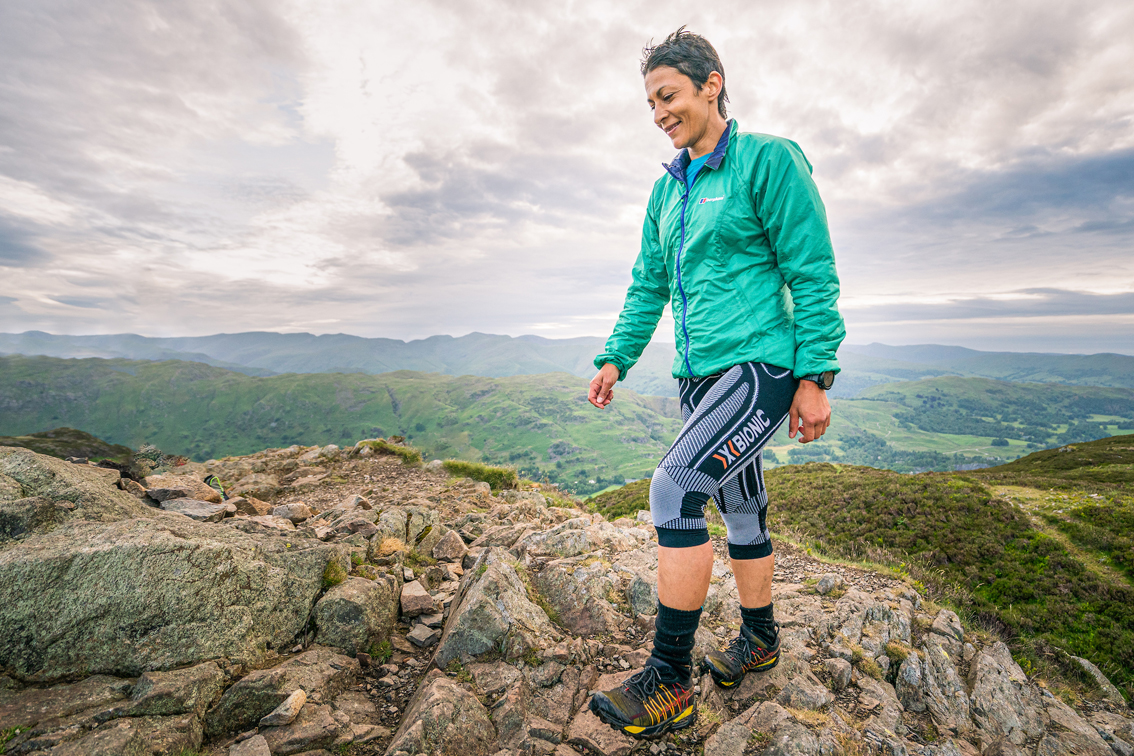
Sabrina reaches Lingmoor, her final Wainwright. Photo: Steve Ashworth
There were some cold, wet and windy nights. Going over Scafell I was wearing about three or four Primaloft jackets and I was drenched to the bone. Generally, though, the weather was okay. Nothing dramatically bad and nothing that was going to impede an attempt, but the conditions weren’t particularly great. There’s always an element of luck whenever you’re doing any of these challenges. If the weather turns on you then there’s not a lot you can do.
The finish line
I set off knowing that I could do it but hoping nothing random would crop up. Towards the end I knew I was able to press on to the finish, but I was still mindful that various unknowns could occur – although I don’t think even a snow blizzard would have stopped me by that point!
On the last leg it was lovely and sunny, and I was just taking my time to enjoy it. I had to remind myself to push on a bit to make sure I got there within six days.
If I’d completed the round on my first attempt then I would have felt elated, but by the fourth time it was more a feeling of relief that I didn’t have to plan another attempt! I was very pleased I’d finished it within the six days and that it had been such good fun with a group of truly wonderful and supportive friends.
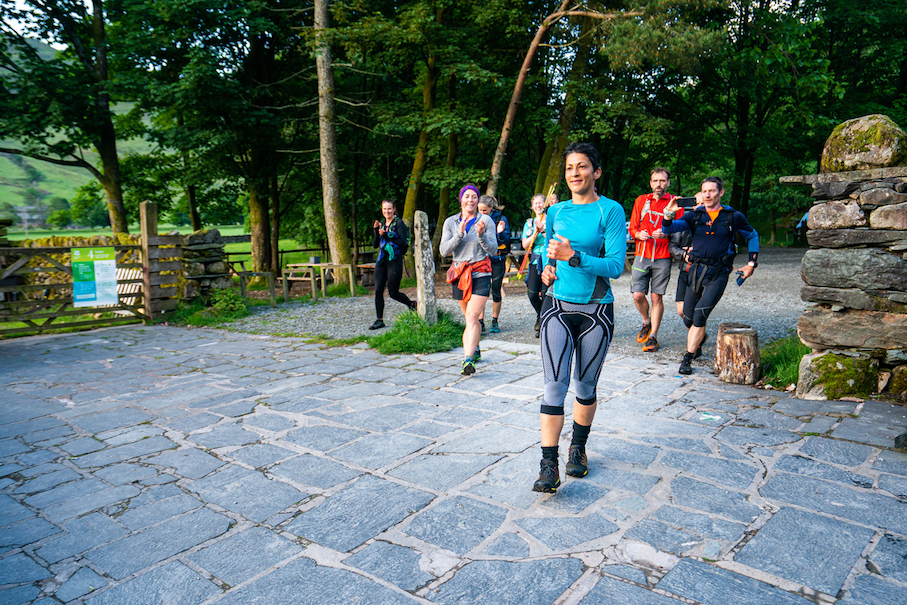
Sabrina reaches the finish line in Langdale. Photo: Steve Ashworth
I really enjoyed all of the attempts, but I was getting frustrated with the planning and logistics. When there’s such a large support team involved it’s important to spend time on the spreadsheet to get the schedule as accurate as possible so that the support team knows what they are doing and don’t get inconvenienced when it’s all out of sync.
I would like to do some unsupported / solo / self supported challenges next so I can just enjoy the running without all the organisation. However, I do enjoy company on the hills and the camaraderie I share with fellow fell and ultra runners.

